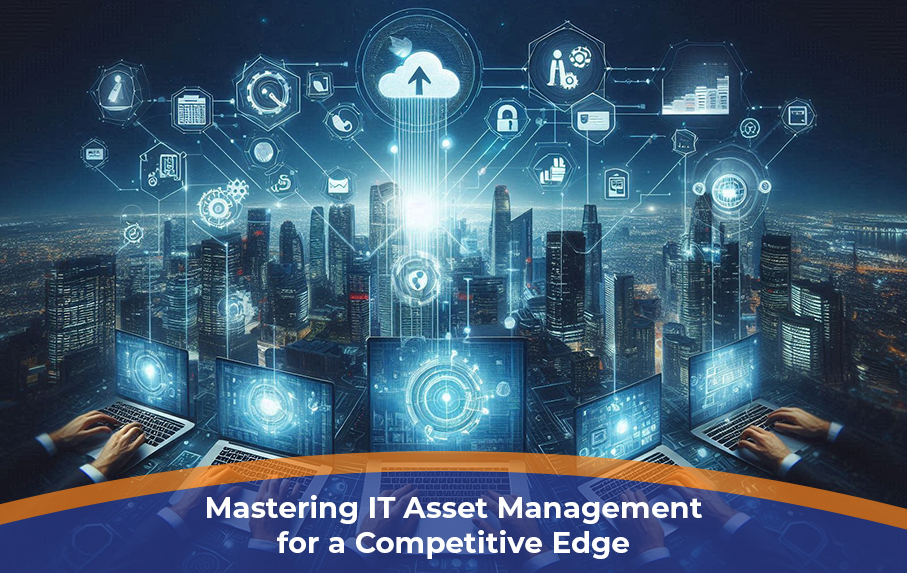IT infrastructure assets are essential components necessary for an organization’s IT ecosystem’s operation, security, and performance. These assets, both tangible and intangible, are crucial to business operations and strategic goals. Key examples include:
- Hardware Assets: Servers, workstations, storage devices
- Software Assets: Operating systems, applications, databases
- Network Assets: IP addresses, domains, VPNs
- Intangible Assets: Licenses, subscriptions, intellectual property
- Cloud Assets: Various cloud-based resources
Understanding and managing these assets is fundamental to maintaining a robust and efficient IT infrastructure.
What is Asset Management?
Asset management involves the systematic process of developing, operating, maintaining, and upgrading assets cost-effectively. In today’s fast-paced business environment, efficiently managing assets is critical to maintaining a competitive edge. Whether dealing with physical assets, digital resources, or human capital, having complete control and visibility over all assets can significantly enhance productivity, reduce costs, and drive better decision-making. Here’s how leveraging modern technology can ensure optimal utilization and minimize losses.
Key Components of Effective Asset Management
1. Centralized Asset Management
A centralized asset management system integrates all asset information into a single platform, providing a comprehensive view of resources. This consolidation simplifies tracking, maintenance, and utilization of assets, eliminating the inefficiencies of disparate systems.
- Unified Dashboard: Access real-time data and analytics from a single dashboard, offering a holistic view of your assets.
- Streamlined Processes: Automate routine tasks such as scheduling maintenance, renewing licenses, and updating records.
2. Data-Driven Decision Making
Leveraging data analytics can transform how assets are managed. By analyzing usage patterns and performance metrics, informed decisions can be made that enhance efficiency and reduce costs.
- Predictive Analytics: Use historical data to predict future asset needs, maintenance schedules, and potential downtimes.
- Resource Allocation: Optimize asset allocation based on usage trends and demand forecasts.
3. Enhanced Collaboration and Communication
With a comprehensive asset management system, teams across different departments can collaborate more effectively. Shared access to asset information ensures everyone is on the same page, improving communication and coordination.
- Integrated Workflows: Facilitate seamless workflows by integrating asset management with other business processes.
- Collaborative Platforms: Use cloud-based platforms to enable real-time collaboration and information sharing.
4. Compliance and Risk Management
Staying compliant with industry regulations and managing risks are critical aspects of asset management. A robust system helps adhere to compliance requirements and mitigate risks associated with asset utilization.
- Regulatory Compliance: Ensure all assets meet industry standards and regulatory requirements.
- Risk Mitigation: Proactively identify and manage risks associated with asset management.
5. Cost Savings and Efficiency
Effective asset management translates to significant cost savings and operational efficiency. By optimizing asset usage, reducing downtime, and minimizing losses, businesses can achieve higher returns on investment.
- Reduced Downtime: Prevent unexpected failures and reduce downtime through proactive maintenance and monitoring.
- Asset Lifecycle Management: Extend the lifespan of assets by ensuring they are well-maintained and utilized optimally.
Having complete control and visibility over your assets is not just a strategic advantage; it’s a necessity in the modern business landscape. By implementing a centralized asset management system, leveraging real-time tracking and monitoring, making data-driven decisions, enhancing collaboration, ensuring compliance, and achieving cost savings, businesses can optimize asset utilization and minimize losses. Embrace the power of technology to stay ahead of the curve and ensure your assets are working as hard as you are.
#IT asset management #IT infrastructure assets #Centralized asset management #Real-time asset tracking #Asset lifecycle management #Predictive analytics in asset management # IT asset monitoring

Recent Comments